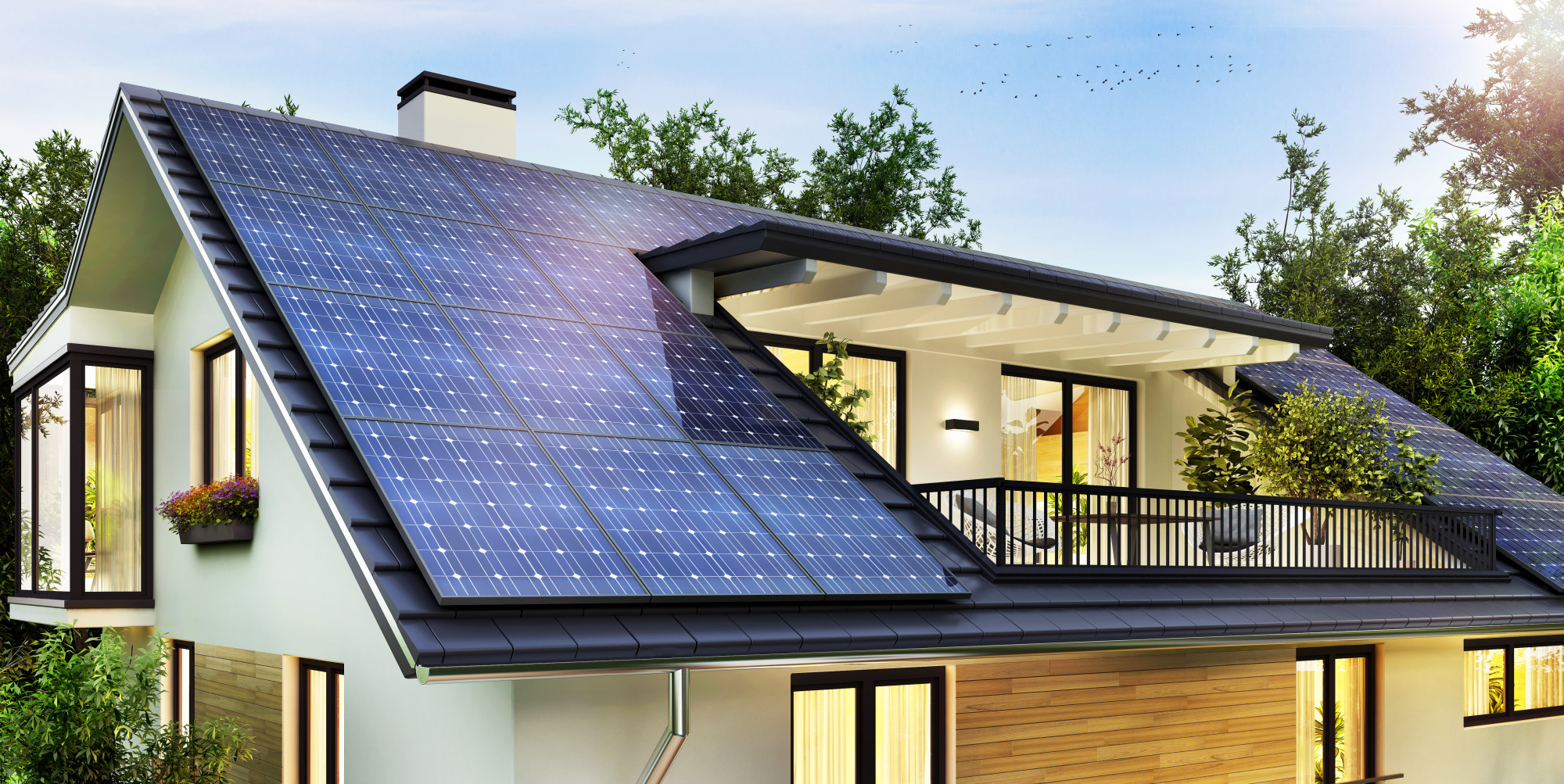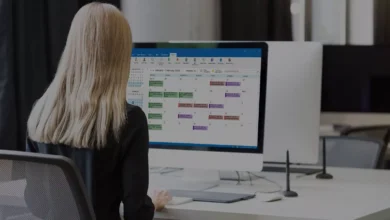The Environmental Benefits of Solar Panel Installation

As the number of solar panels in use across the U.S. continues to grow, there are some significant environmental benefits that are hard to ignore. Still, it takes a little convincing for some people to turn to technology when it comes to fighting climate change.
Believe it or not, solar panels can actually save you money, too!
If you are now convinced that you need to switch to solar energy for your home, we can walk you through the full solar panel installation process step by step, its benefits, and all you need to know to make sure you have a smooth installation.
Understanding Solar Panels and Their Benefits
Solar panels are an incredibly efficient way to harness the power of the sun and convert it into usable energy. Solar panels consist of a series of interconnected solar cells made out of semiconductor material. When exposed to the sun, the solar cell generates an electrical current.
The current is channeled through an inverter to convert it into a usable form of energy, typically alternating current (AC). Solar panels can be used to power anything from a home’s entire electrical system to a camping trip’s battery pack to a mobile phone.
They are also more cost-efficient and eco-friendly than traditional electricity sources. With proper installation, solar panels can supply clean, renewable energy for years. The environmental benefits of solar panel installation are well worth the investment. Here are some of the environmental benefits of installing solar panels.
Reduction in Greenhouse Gas Emissions
Solar panel installation has a multitude of environmental benefits. By producing electricity with solar energy, polluting fossil fuels like coal and gas are not required. It reduces the emission of carbon dioxide.
Other airborne pollutants released in traditional energy sources will be reduced or eliminated. Finally, solar panels are an increasingly affordable option. It means, more people are using renewable energy.
This reiterates the importance of sustainability in our energy consumption. It puts us one step closer to reducing our environmental footprint.
Conservation of Natural Resources
Solar panel installation reduces our reliance on non-renewable energy sources. It conserves natural resources by reducing our use of fossil fuels. Solar energy is a clean, renewable resource with no emissions. Solar energy does not produce any harmful by-products, such as carbon dioxide, mercury, or sulfur dioxide.
Solar panel systems can offset our energy consumption by reducing demand on local electricity grids. If more people adopt solar panel systems, we will lessen the burden on our natural resources and reduce our overall energy demand. In this way, solar photovoltaics might play an important role in decreasing the over-exploitation of natural resources.
Reduction in Water Usage
Solar panel installation is a major benefit to the environment, particularly when it comes to water usage. Solar energy technology uses natural energy sources such as sunlight, not water. Traditional energy sources, such as coal, nuclear, and natural gas, require a lot of water in order to produce electricity.
For example, a typical 500-megawatt coal-fired plant needs about 500 million gallons of water annually for cooling and other operations. Solar panel installation, in contrast, does not require any water whatsoever, meaning water usage is drastically reduced.
Furthermore, solar does not release any pollutants or toxins into the environment, making it a significantly cleaner form of energy production than nonrenewable sources.
The reduced water usage, in turn, helps promote sustainable agricultural practices and helps diminish the strain on groundwater and surface water sources. All in all, installing solar panels is an excellent way to contribute to the conservation of the environment’s natural resources.
Improvement in Air Quality
Solar panels require no burning of fossil fuels and produce no emissions, thus improving air quality. Air quality is further improved with the use of photovoltaic cells to generate electricity from sunlight, eliminating the need for traditional power sources. Solar output is reliable and predictable, and this contributes to a more stable, clean, and efficient power grid.
Solar panels also offer the benefit of being cost-effective, reducing or eliminating electric bills, and providing a consistent source of clean energy for years. The solar installation also creates jobs in the renewable energy sector and provides a reliable source of energy for homes and businesses. The environmental benefits of solar are undeniable and should not be ignored in order to mitigate our impact on the environment.
Reduction in Land Use
With the use of photovoltaic cells, solar energy can be harvested directly and tapped into the electrical grid, meaning much less space is used to produce energy. Solar panels are also one of the most efficient renewable energy sources, meaning that even a small amount of panels can produce enough energy to power a home and significantly reduce energy consumption.
In addition, solar panel installation can reduce land use as many people now choose a solar solution in lieu of competing energy sources, such as biofuels.
What to Consider Before Installing Solar Panels
Before installing solar panels, it is important to consider all of the necessary factors to ensure an effective and efficient installation.
The Location
The location of where solar panel installation will take place is an important factor to consider. Sunlight availability is key, as it directly influences the efficiency of solar panel performance. Shaded areas will significantly reduce the amount of sunlight a panel can absorb, meaning that solar panel installers need to select areas that are as unobstructed and open to the sun as possible.
It is also necessary to take into account the direction a solar panel will face – the more efficiently it is directed to the sun, the greater the capacity for energy production. It is important to check for any potential obstructions, such as trees, buildings, or any nearby landscape features, which may impinge upon the panel’s sunlight access.
The Local Climate
It is also important to consider the local climate when making the decision to install solar panels. The power generated from the panels relies on consistent sunlight, so places that experience frequent cloud coverage or extremes in temperature can experience a decrease in effectiveness.
It will be important to consider the best times of the year to install solar panels in order to make the most of the available sunlight. Sophisticated systems and weather analysis can help to make sure that solar panel installations are optimally positioned to maximize energy production throughout the year.
The Type of Panels
Solar panel installation is a process that involves many decisions, including the type of solar panels to use. The type of panel chosen directly affects their output, efficiency, design, and cost. Two common types of panels are monocrystalline and polycrystalline.
Monocrystalline panels are made from a single silicon crystal and usually have the highest efficiency and the longest life, although they are the higher-priced option. Polycrystalline panels are made from multiple crystals and tend to be less efficient, although they are less expensive.
The type of panel will also depend on the intended use and climate of the installation site. Roof-mounted panels need to be durable enough to withstand extreme weather and driven elements, while ground-mounted solar panels must be designed for easy installation. Selecting the appropriate panel for the job will ensure a successful and long-lasting installation.
The Cost
Solar panel installation can be an expensive undertaking depending on the extent of the installation and the types of materials used. The cost of solar panel installation can include the cost of purchasing and installing the panels, any wiring or cabling needed, and the installation services themselves.
If you choose to buy your solar panels in bulk, you may be able to receive more discounts. Make sure to do your research and check the company website before deciding. Additionally, you may also choose to lease the solar panel system, which can reduce the installation costs.
Various government incentives may also be available to reduce the price of installation if you live in certain countries or regions. The cost of installation generally pays for itself over time in the form of the energy savings generated.
Step-by-Step Installation Procedure
Solar panel installation is an important step in implementing renewable energy sources for homes and businesses. To ensure the greatest efficiency and safety, it is important to adhere to the proper installation procedures for your solar panel system.
Inspect The Site
Solar panel installation is an important procedure that requires inspections prior to the installation process. Inspecting the site is one of the most important steps to take in this process. This includes checking for any obstructions around the area where the solar panels will be placed.
This can include ensuring there are no trees nearby that could drop branches or wires that could create safety hazards. Inspecting the area can also involve looking for any immediate damage to the structure where the solar panel will be installed and verifying that the area is level.
Checking the mounting supports that are being used is also important before materials are secured in place. Doing a thorough site inspection helps make sure that the solar panel installation is successful and safe.
Decide The Type and Number of Panel To Use
The type of solar panel to use for a solar installation should not be taken lightly. There are several factors to consider when choosing the panels, such as physical size, cost, efficiency, and durability. The most common solar panels have cells made of silicon, which transforms solar energy into electricity.
The size of the cells can affect the efficiency and cost of the overall system. Smaller cells are generally more efficient and more expensive, while larger cells are less efficient but less costly. Additionally, some panels are more durable than others, depending on which materials they are made of.
Depending on the size of the system, you may need to buy different types of panels to accommodate your needs. Ultimately, the type of panel to use for solar installation will depend on your budget, local climate, and system size.
Secure Permits
Securing permits is an important part of the process to ensure safety and compliance with all local laws. Depending on the jurisdiction, the permitting requirements may vary from state to federal laws, and the local homeowners may need to coordinate with multiple organizations and agencies for proper permitting.
Before beginning the installation, be sure to obtain all necessary permits to avoid any potential penalties due to improper installation. Secure permits are key to successful solar panel installation that meets all applicable requirements and keeps everyone safe.
Begin The Installation Process
The mounting brackets must be secured to the roof or building, and the wires connecting the solar panels to the electrical system must be laid out and properly connected. Professionals typically oversee the installation of solar panels to guarantee the highest quality and safety standards are met.
If the site includes a battery-storage system, the solar panel must be connected to the system. Finally, the electrician must check the entire system, and the system must be tested and safely connected to the electrical grid. With the installation process complete, the panels are now ready to generate solar energy for years to come.
Following Up and Ongoing Maintenance
Once you have your solar panel installation completed, it’s important to follow up and ensure the proper ongoing maintenance of the system. Check-in with the installer to learn about the system’s aesthetic and maintenance needs, as these can differ between systems.
Quality ongoing maintenance and monitoring will help you maximize the benefits of your clean energy system. Regular panel cleanings, weather-proofing, hardware inspections and services, and panel and output monitoring will be essential for promoting the long-term health and performance of your system, as well as for reducing the cost and complexity of repairs and replacements.
With proper maintenance, you can ensure quality returns on your investment for many years.
Solar Panel Installation: All You Need to Know
By utilizing solar panel installation, we can reduce our dependence on non-renewable energy sources and leave less of an environmental footprint. Move towards a cleaner, more sustainable future with solar power – call your local and state representatives today to show your support for renewable energy initiatives!




